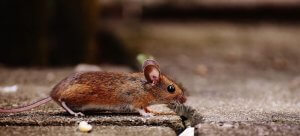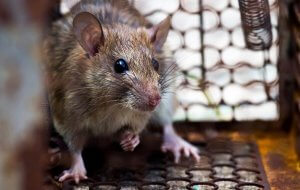The need for pest exclusion is as old as mankind and it relies heavily on the principle that it is easier and safer for the environment to keep pests out of a home than it is to eradicate an infestation once it takes hold.
Mice and rats love our homes because so many of them abound with cracks, holes and other easy points of ingress, such as improperly sealed vents, that serve as portals to warm interiors. Pest exclusion is a pro-active strategy that involves sealing up potential entry points and it is a first line of defense against rodent infestations, which are particularly prevalent during the colder months of the year.
As a result, pest exclusion is becoming more and more popular for use in residences, particularly for those throughout Pittsburgh and its surrounding environs — not only because of environmental considerations but also because our teams at Pestco Professional Services use fewer chemicals and our services are cost-effective and more efficient than others of their ilk.
Safe for both humans and eco-friendly, this integrated form of pest-management supports both biology and the natural life cycle of pests.
How Does Pest Exclusion Work?
The very first thing pest-control and pest-management experts will do is to thoroughly inspect the residence for vulnerable areas and reinforce them against invading rodents wherever possible. Professional judgment and experience is mandatory because there are always areas in every residence that must remain ventilated and open to some extent.
Air currents can be alluring to rodents, as they have seasonally appealing temperatures (cool in the summer, warm in the winter), and they may also carry the scent of food being prepared inside.

A Balance Between Pest Prevention and Elimination
Insects and rodents are and always will be integral to a healthy eco-system that sustains the endless balance of nature. Effective rodent management relies on the ability to identify signs of an infestation, interpret site-specific rodent activity and overcome the cryptic, exploratory and opportunistic behaviors of rodents.
But what if indoor mouse and rat problems could be prevented? To achieve this, a new movement within the pest management industry is cashing in on an old idea: namely, pest exclusion.
Pest Exclusion When The World Was Young
In the ancient world, there were no formal strategies that could prevent pests from gaining entry to homes and precious stored food supplies. Early populations relied on primitive smoke-screens, which were temporary at best.
For the most part, the battle between man and pest invaders was one in which the pests often won. Early cultures were nomadic, and the hunters and gatherers who lived off the land stored grain from their field crops in granary baskets placed on raised wooden platforms in efforts to to keep pests at bay.
In ancient terms, pest exclusion was often tantamount to indirect pest-control and pest-management methods, such as gathering and roasting insects and then consuming them as sources of protein, applying sulfuric compounds and herbs and oils as pesticides, and even resorting to planting enough crops for both man and pests.
Alarming Rodent Facts and Statistics
It is said that there is a rat for every single person living in the United States. The National Fire Protection Association (NFPA) estimates that rodents are responsible for 20 to 25% of all fires of unknown causes because of their propensity for chewing electrical wiring and gas lines.
According to a new survey conducted by the National Pest Management Association (NPMA), some 29 million Americans have had a rodent problem in their home, and rodents invade approximately 21 million American residences each year. Twenty-four percent of home infestations occur in attics and garages; 50% in kitchens; 27% basements; 22% bedrooms; 25% living rooms and 9% elsewhere. Forty-five percent of infestations occur in the fall and winter months.
According to Missy Henriksen, former vice president of public affairs for the NPMA: “Rats and mice are commensal rodents and have been sharing our food and shelter for centuries, spreading disease, destroying food and property. To prevent these unwanted rodents from using our homes as shelter to ride out the chilly winter months, we advise homeowners to rodent-proof their homes now.”
The word, rodent, is derived from the Latin verb, rodere, meaning to gnaw. Rats and mice share certain behavioral characteristics. They are perceptive to touch and have sensitive whiskers and guard hairs on their bodies. They love running along walls and between objects that allow them constant contact with vertical surfaces. They have poor eyesight and are thought to be color-blind, but their senses of smell and taste are extremely acute.
A Few Interesting Facts About Mice
The average mouse eats only about 3 grams of food per day, but experts estimate that a single mouse contaminates and destroys 10 times more food than it consumes. In addition, it leaves its droppings and partially eaten foods behind, rendering all of it inedible for both humans and their pets. If food is not available, mice will gnaw on plastic containers, wooden items, and shred all kind of stored paper for their nests, such as paper towels, and napkins. The exterior of a residence isn’t safe either, as both mice and rats cause structural damage in their attempts to penetrate the interior.

Mice require a hole the size of a dime to squeeze into the average residence. If a discovered hole is not quite big enough, the rodent will chew on it until it can fit through. In the warmer months of the year, mice dig up and feed upon newly planted crops. They also tunnel into other property sections in search of food and nesting areas.
The average house mouse can have up to 10 litters in a single year with about 6 young in each litter. They only need about seven weeks to become full grown and under ideal conditions offering nesting and food sources, a mouse population can literally explode in just a few months.
A Few Interesting Facts About Rats
Every female rat can have up to 7 litters in 1 year, with up to 14 young in each litter. Pups are full-grown in about 4 weeks, which means they can begin reproducing at just two months old. Within the span of a single year, a few generations can be born from each female in the litter.
According to a survey compiled by Orkin, Pittsburgh home-owners should be advised that their city is #19 in the most current list of the 50 most rat-infested urban centers in the United States. Truth be told, there is no neighborhood that is immune to rats, albeit cities are more susceptible to rodent invasions than rural sectors due to infrastructure issues such as old sewage systems, waste disposal practices, poor drainage and other related issues.

Rats are responsible for the transmission of many diseases. Their feeding habits are destructive, and their nesting behaviors can compromise the structure of infested buildings. However, rats are secretive and not seen by humans when populations are low. Therefore, an infestation may prove difficult to confirm. If rats are observed in plain sight, it is likely that a full-blown infestation already exists.
According to rodent expert, Dr. Bobby Corrigan: “Rats need bigger spaces, and indoors, concrete hollow block walls can become virtual rodent condos. Rats that live outside prefer available earthen spaces; that is, they prefer to live in and around healthy dirt. If you’re a home-owner investigating an outdoor rat problem, look for healthy plants and shrubs that are cavernous in shape, as this is where you are likely to encounter a rat burrow. A burrow is typically about 4 to 6 feet in length with up to three holes.”
If you find them, and you’re within the Allegheny county limits, call our pest-control and pest management specialists immediately — (412) 252-5200 !!!
10 Tips For Keeping Rodents Out Of Your Home
As stated earlier, the best way to control rodents is to keep them out of your Pittsburgh home in the first place. Here are some helpful ideas a home owner can incorporate into an effective rodent prevention agenda.
1. Remove Food And Shelter
A home owner’s first line of defense against rodents during the fall and winter months of the year is to eliminate food and shelter options. This includes: trimming vegetation close to your residence where they like to hide and keeping your yard clean and free of grass clippings or tree trimmings, which provide perfect harborage spots for rodents.
Homeowners must eliminate outside food sources because they attract rodents. These include: garbage, dog and cat food, dog feces, birdseed, and fruits or berries that may have fallen to the ground. Remove abandoned beehives, as they can be a source of food for mice all during the winter months. If at all possible, feed pets indoors but if they must be fed outside, remove food 30 minutes after serving and, since rodents are nocturnal, feed pets well before darkness falls.
2. Make Sure There Are No Entry Points Near Your Home
A responsible home owner must check the perimeter of his or her residence to insure there are no gaps that could serve as ingress. A mouse can fit through a pencil-sized opening, which means special attention must be paid to pipes, wiring, conduits, cables, doors, and windows. The foundation of the home must be effectively sealed. Close any openings found using sheet metal, hardware cloth, or wire mesh. Pieces of tin cut from coffee cans make great patches. If mice are still seen near the premises, call the pest-control and pest-management experts at Pestco for help and advice.
3. Remove And Properly Dispose Of All Junk
Clearing out junk accumulated in back yards is vitally important because rodents love to hide under woodpiles or lumber, inside abandoned cars, appliances, furniture and under trashcans. One solution is to store any lumber or firewood on racks that are at least 12-inches off the ground, and away from the exterior of the residence. Store trash and garbage cans on racks as well, or on a pad made of concrete.
4. Beware of Attached Garages
These can be problem areas because garage doors generally do not fit as closely as other types of doors and once a rodent has found its way inside an attached garage, access to the rest of the home is a piece of cake. As a general rule, inside an attached garage should be the last place a homeowner leaves plastic trash bags, but if no other area is available, extra care must be taken to use only containers that are in good condition with tight-fitting lids. For extra security, check the doors of attached garages more than once a year.
5. Secure Windows And Exterior Doors
These entry points should fit properly, weather-stripped, and always remain shut when not in use. Screen doors should always be free of holes and are easy to patch. Covering all window and door edges with metal will prevent rodents from gnawing through them.
6. Fix All Leaks And Drain all Ruts Near The Home
Even something as mundane as a small water puddle in the back yard or driveway will provide rodents with all the water they need to survive. Keep all gutters clean so they don’t gather standing water. Check window air conditioners, which are notorious for puddle creation. Make sure all swimming pools and hot tubs are covered and drain ornamental ponds and bird baths. Other notorious trouble spots are water hoses, which often leak at connecting points. Just to be safe, when finished using a hose, shut off the water at the spigot and not at the nozzle of the hose.
7. Minimize Any Potential Bridges
Proper pest exclusion requires that home owners be vigilant when dealing with vegetation and plants that may come in contact with or be adjacent to a residence. This is because they provide bridges to shelter for rodents.The management of vegetation includes pruning branches 6 feet away from a home and low growing plants to a vase shape or installing a vegetation free zone (2-foot band, 6 inches deep using stones smaller than 1 inch).
8. Never Leave Plastic Trash Bags Outside
Store your garbage in containers preferably made of metal, with tight-fitting lids. Turn compost piles regularly and don’t compost meat, bones, dairy waste, fats, or oils. Remove dog feces from the yard daily.
9. Items Sold for Weatherization Are Not Suitable For Exclusion
Items like most door sweeps that are sold at hardware stores can be overcome by a single rodent, but high-density brush sweeps or rubber-encased steel fabric sweeps are very effective in keeping mice and rats out of a home. Areas with large rodent populations will require rubber-encased, steel fabric sweeps.
10. Consider Permeability Or Airflow
Rodent exclusion must never include completely sealing off a residence because special features that are designed to permit airflow, water drainage and movement can ultimately affect a home’s structural stability and create new moisture problems. Water-permeable materials are required for small openings that allow water to drain from an assembly; the underside of roof hangings and ridge vents, where a flow of continuous air is needed demand breathable materials, and air vents require woven hardware cloth.
The Best In Pest Exclusion For Pittsburgh Homes
Since 1948, we have been providing top-of-the-line pest control and pest management solutions throughout the Greater Pittsburgh area and its environs. We’re a family owned and run five-star company and our technicians and service experts are highly experienced. We provide superior professional advice and solutions based on prevention, understanding rodent behavior and the ability to identify signs of an infestation. Our pro-active pest exclusion services are innovative and represent the latest advancements in the world of industrial science.
One such such superior exclusionary method is the Pestco Exclusion Shield, which is part of their Green Shield Certified X-TermiGreen™ program. This service, which focuses on the unnecessary use of pesticides, offers an additional level of “green” pest control combined with traditional exclusionary repellents including sealants, hose bibs and cracks. Expert technicians remove the causes of rodent infestations by employing safe, eco-sensitive solutions.
Expanding foams are designed for energy efficiency, but they are not appropriate tools for rodent exclusion. According to Bob Wiemer ACE (featured below), General Manager of Pestco Professional Services, “Sheet metal and concrete can effectively fill all openings snugly especially those larger than one inch. For gaps less than one inch, steel fabric mesh, is the best solution. We offer a 90 day warranty with our exclusion services. And knowing how to affix these products to the surface in order to prevent the edges from bending requires the knowledge and skill of a professional technician.”

In Conclusion
The time to act against rodent infestations is now. Call Pestco Professional Services today and let us help you with our tried and true, state-of-the-art pest exclusion solutions — (412) 252-5200.
 Over 300 Reviews
Over 300 Reviews 